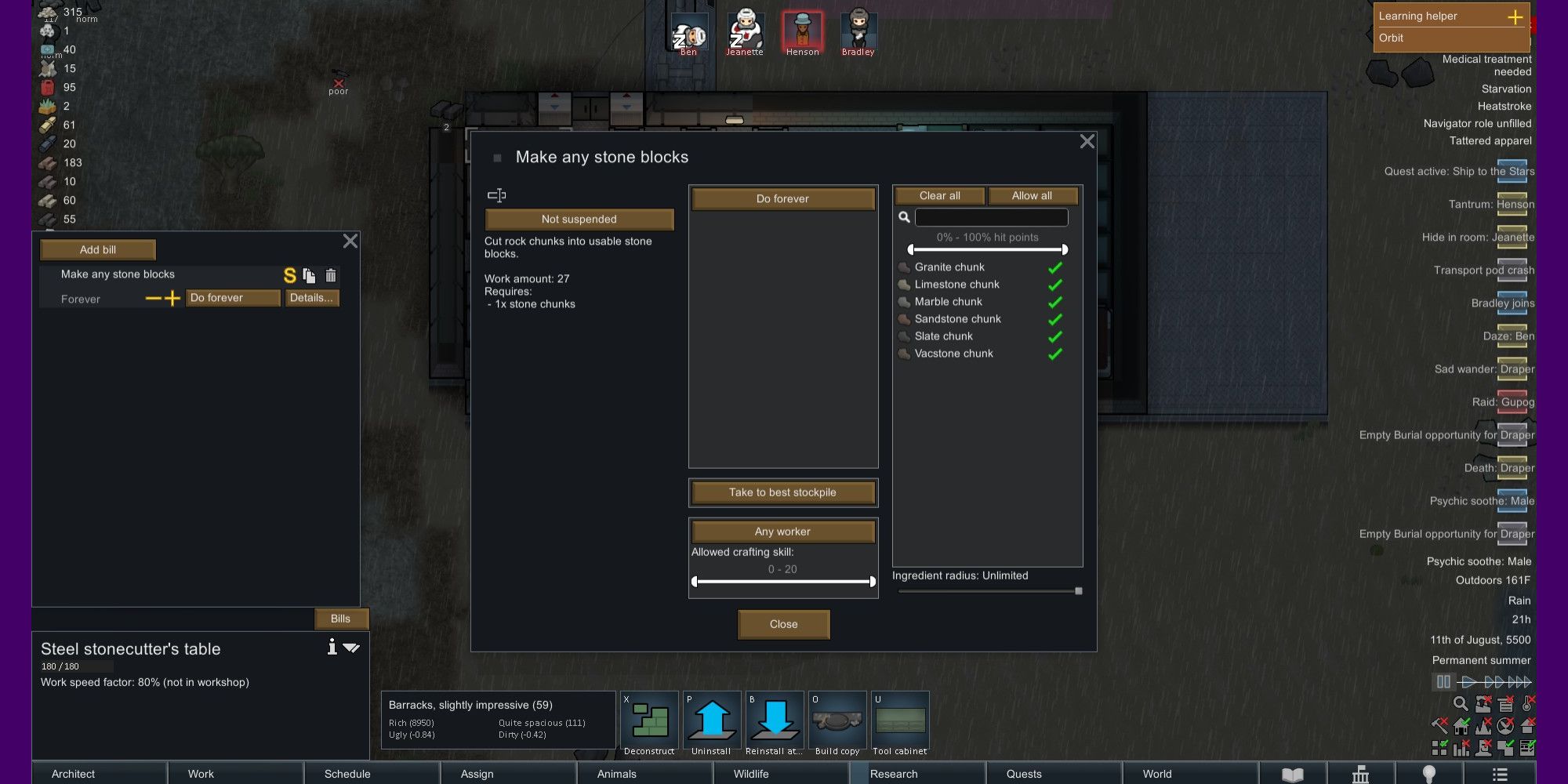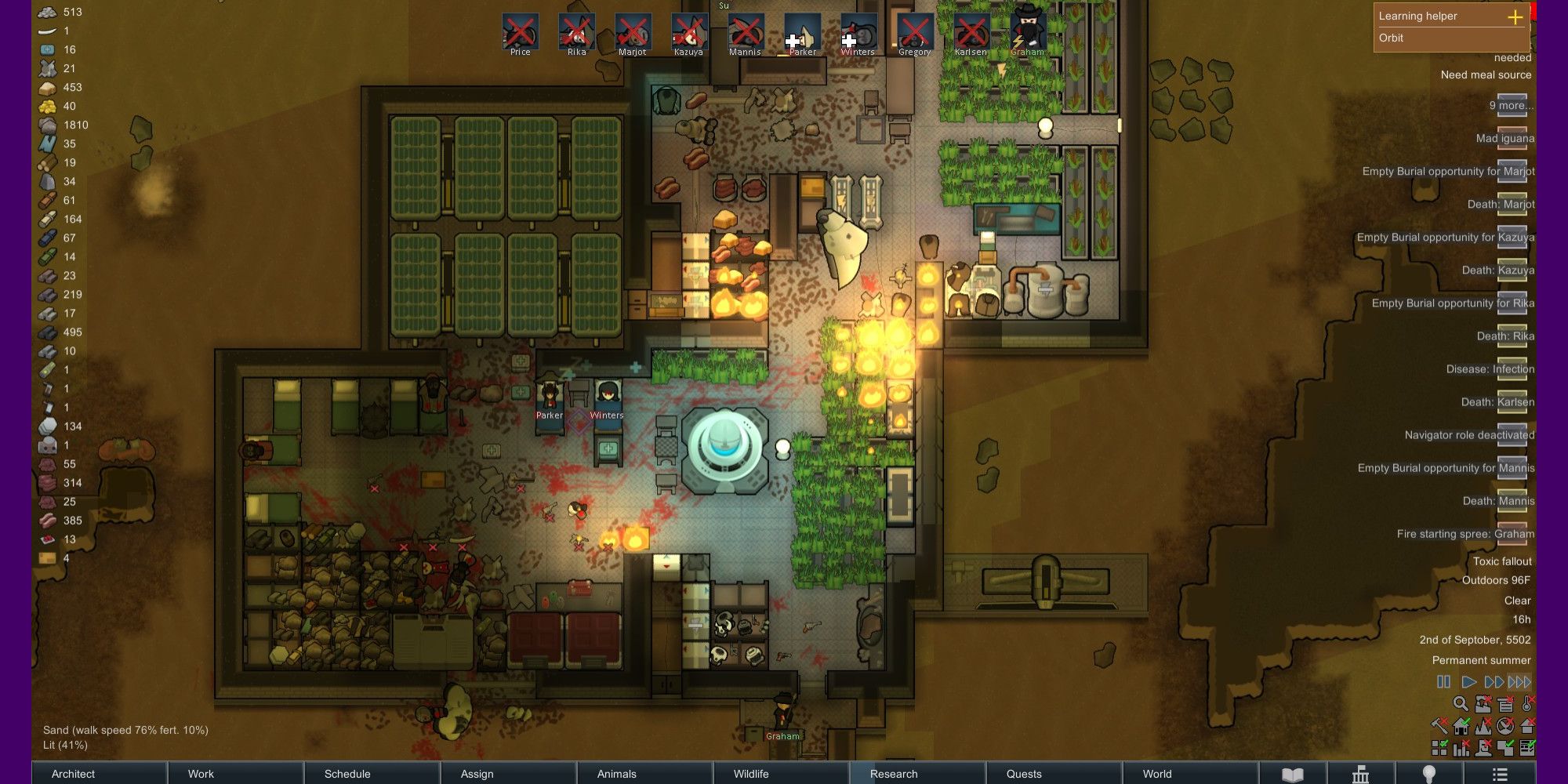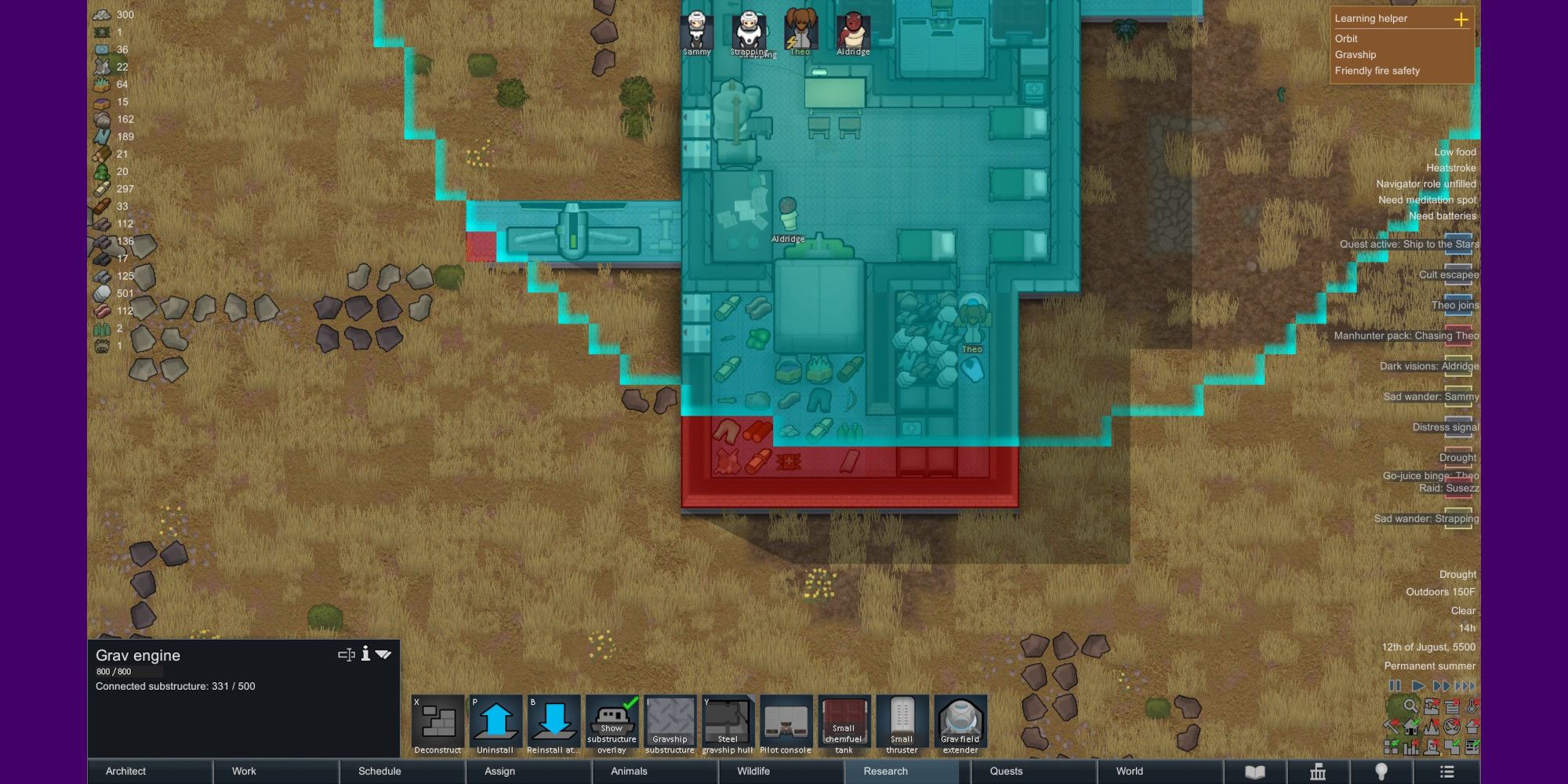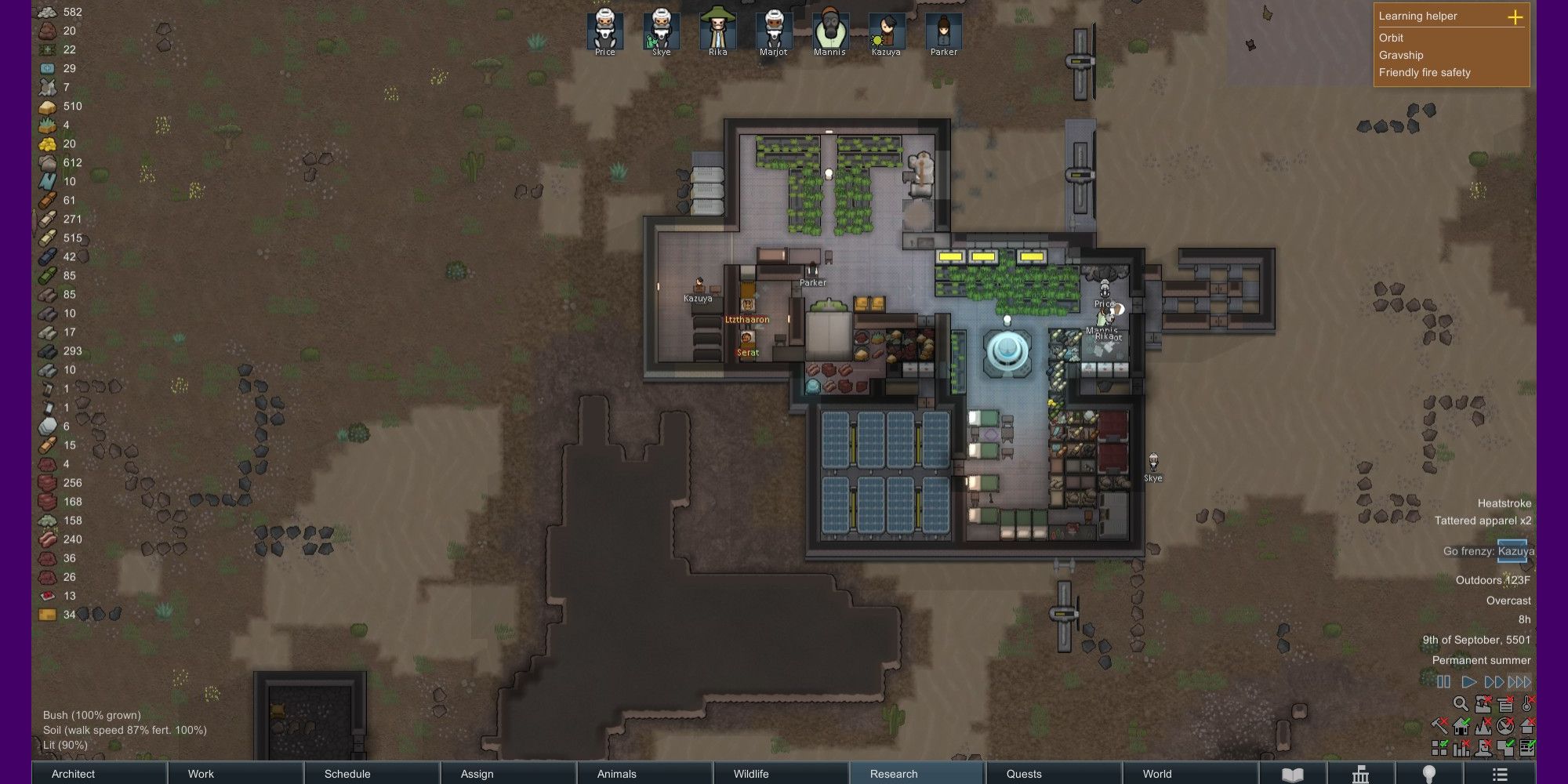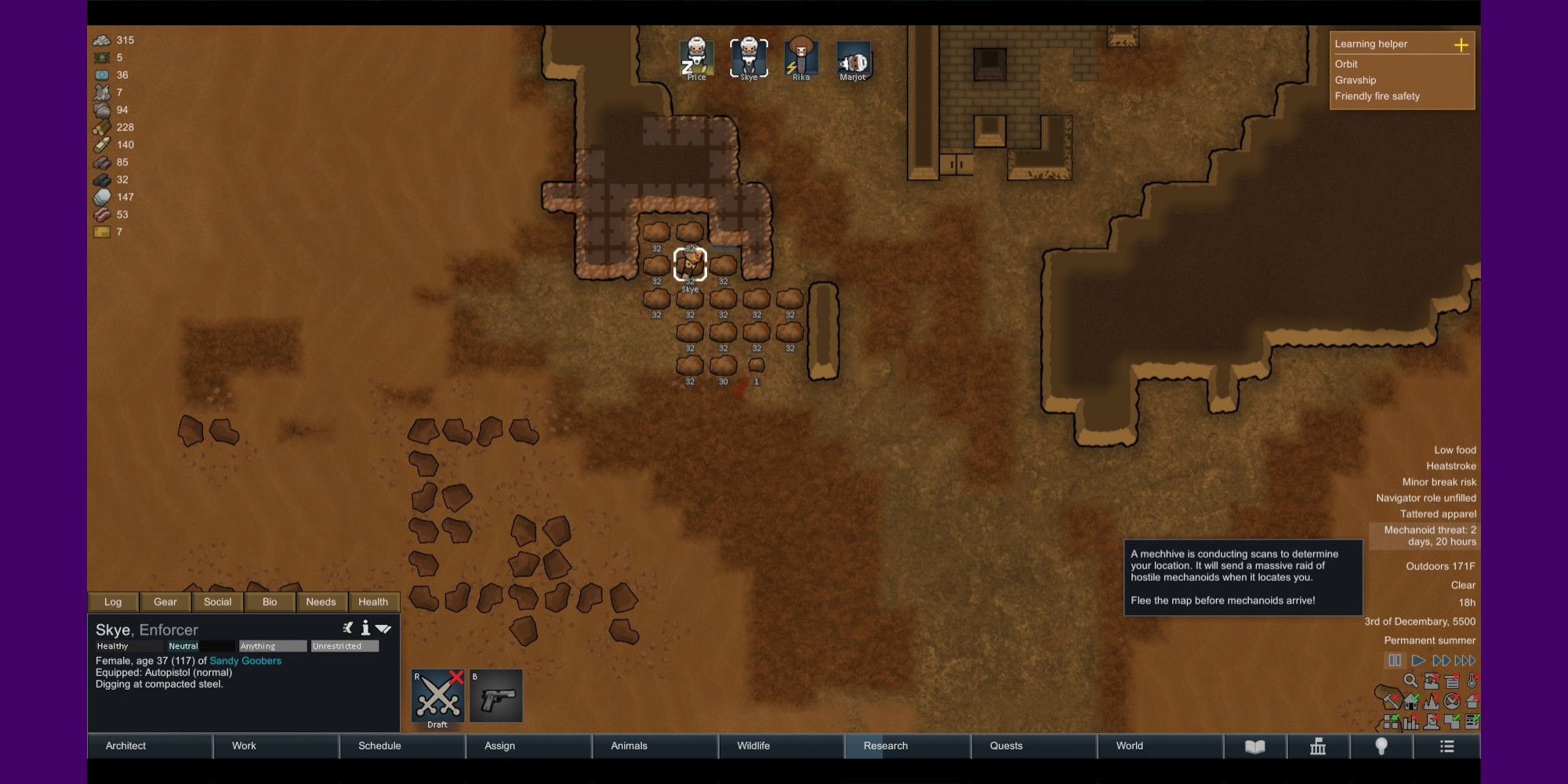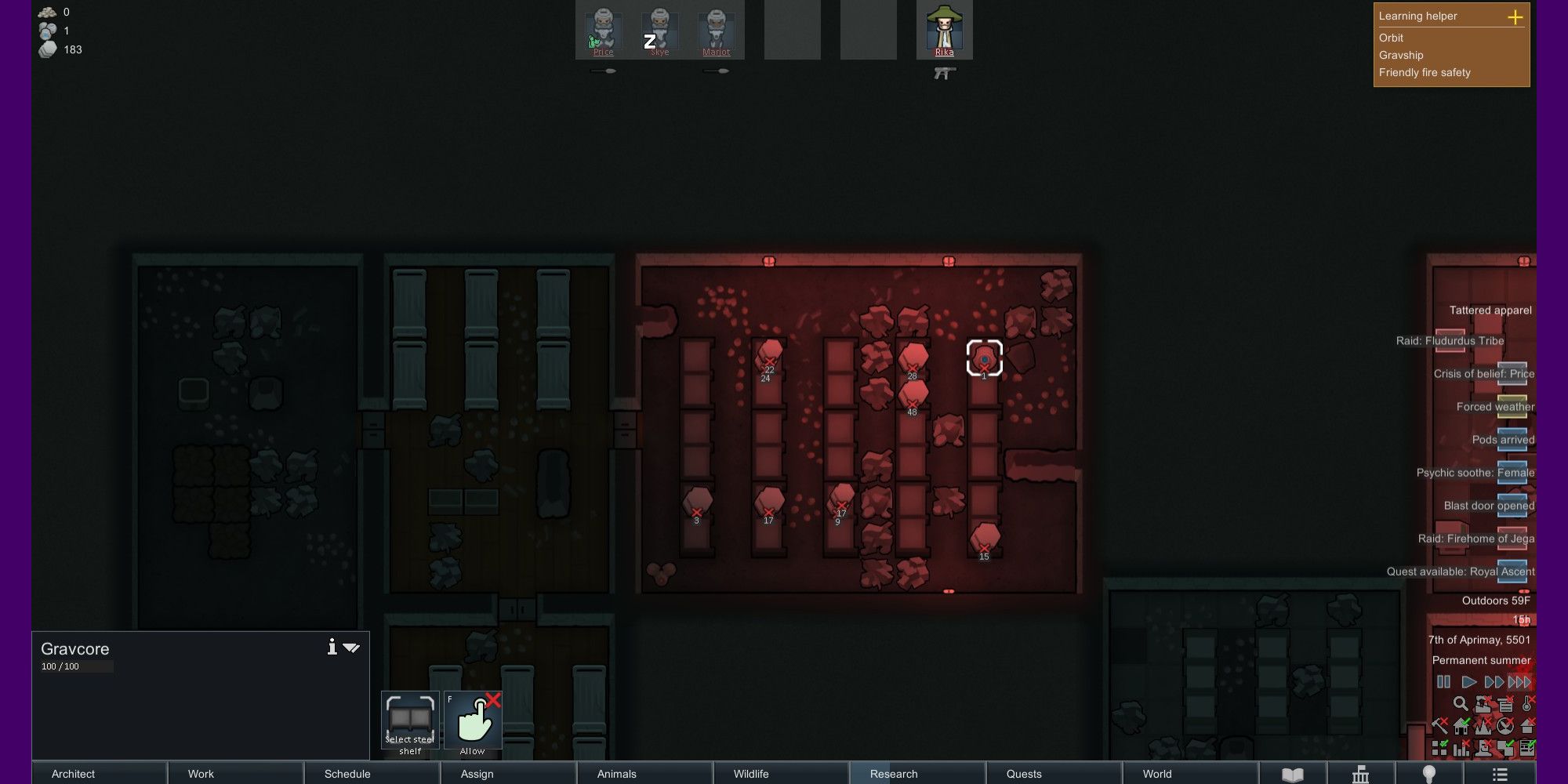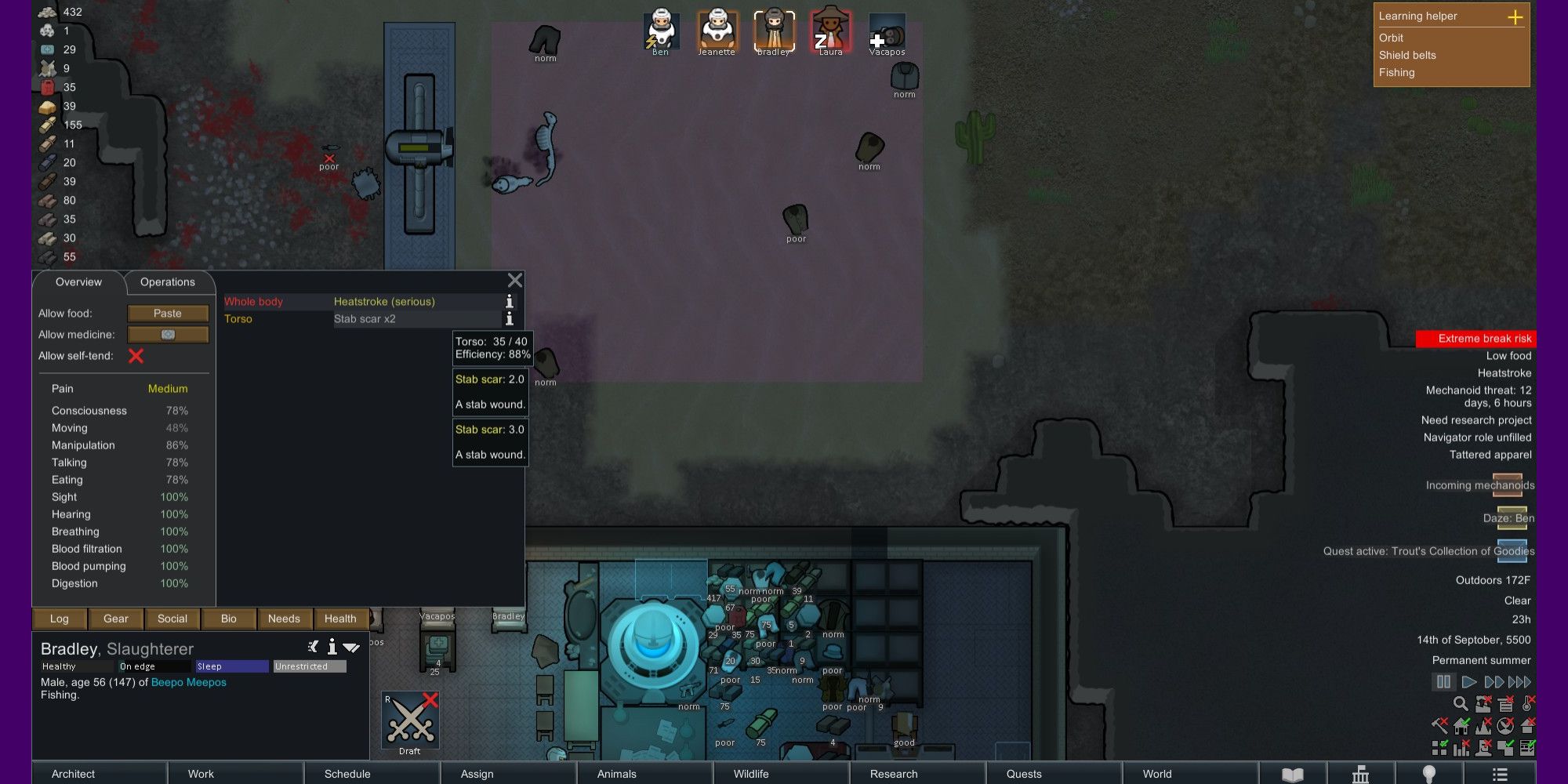Crucial Mistakes to Avoid in RimWorld: Odyssey Expansion

RimWorld – Odyssey is the latest expansion for the already vastly complex colony simulator. It’s easy for new and old players alike to be intimidated by how this expansion increases the already-impressive scope, especially given RimWorld’s fairly high difficulty (assuming your goal is actually reaching one of the several endings you can shoot for in the base game and those added by its expansions).
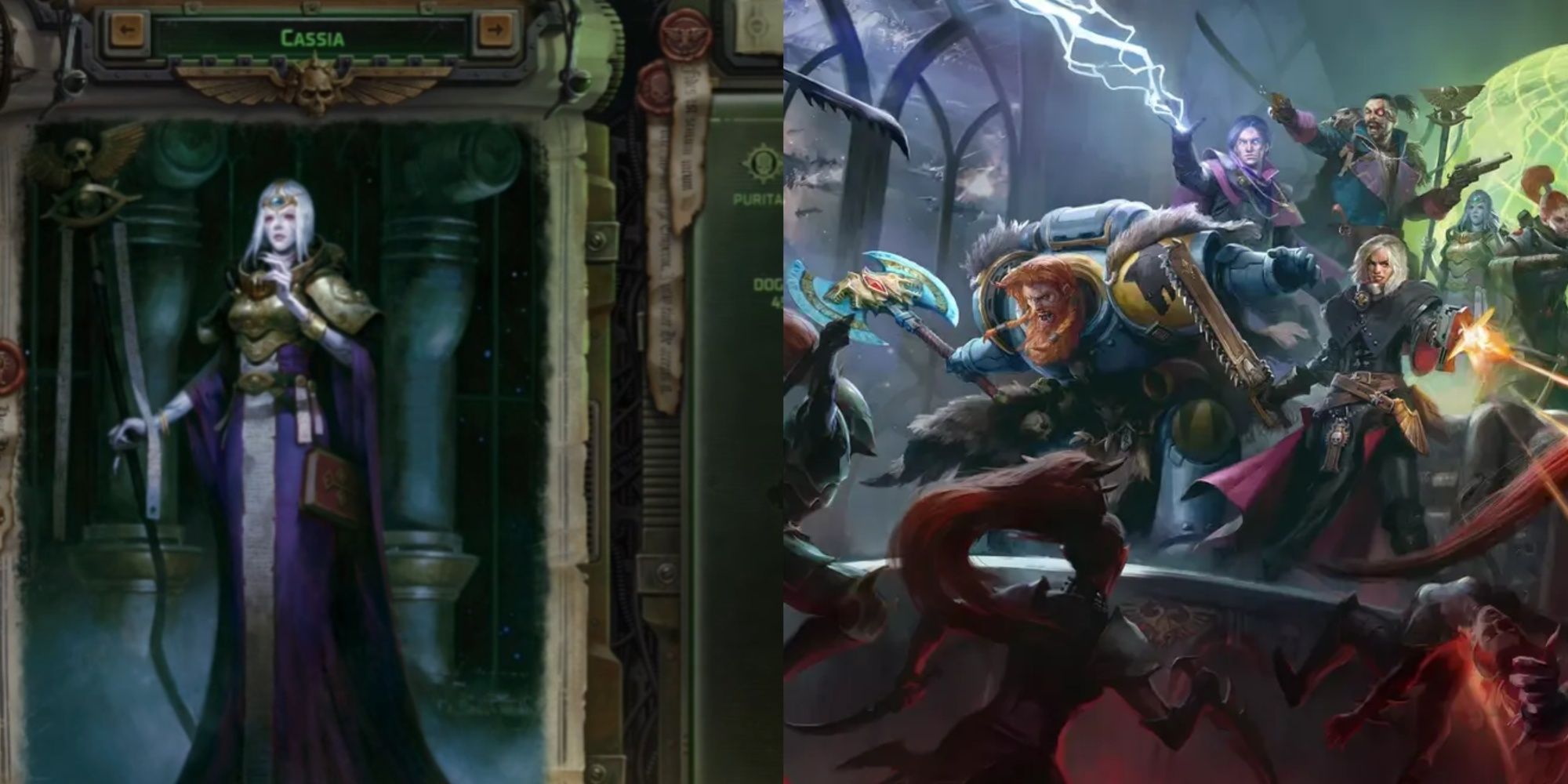
Related
Warhammer 40,000: Rogue Trader – 8 Tips and Tricks We Wish We Knew Sooner
Whether you want to master combat, optimize your resources or avoid getting smacked in Warhammer 40,000: Rogue Trader, these tips will come in handy.
To help, this list covers some common mistakes players are at risk of making and gives some advice on how to avoid them.
9
Underestimating Stone Blocks
Slow to use, but otherwise extremely helpful
Much like one of RimWorld’s major inspirations, Stone Blocks are both an extremely useful resource and often go completely overlooked by players. Created at a Stonecutter’s Table using Stone Chunks (with Granite the best stone for most purposes, but all of the options being useful), making blocks is technically a Craft task, but can be done by colonists of any skill level as long as they’re capable of Crafting at all. This task has no risk of failure and doesn’t take especially long, even for colonists with 0 Craft, although it unfortunately seems to give either zero or very little experience.
Highly versatile, blocks can be used for a variety of purposes, not all of which can be covered here. Block walls and floors tend to count as neutral or beautiful, have decently high health and cannot catch fire (unlike Wood and Steel). They’re also easy to mass produce, with maps tending to have huge amounts of chunks available to cut before you’ll start struggling to produce more blocks.
The only real weakness of blocks is build speed, which tends to be slow compared to other materials. This can, however, actually be (sometimes) made into an advantage. Block walls make an excellent way to train colonists at low Construction, as they take a long time (giving great experience), can be useful for defense and failing to construct them only results in the loss of an easily obtained resource. If building large lines of stone walls, you can sometimes benefit from having only bad Constructors build, as it can easily gain them one or more levels by the project’s end.
8
Forgetting Raids Get (Much) Worse
Bad days are ahead, so you need to prepare
If a colony does well and lasts long enough, there will generally come a time where as many as ten or more highly armed humans or even a Mechanoid killsquad will show up to ruin everything you’ve built. Some Raids also challenge a colonies in unique ways, such as Sieges, where the raiders set up Mortars and pelt a colony with bombs rather than attacking directly. You can also be attacked by sappers, where the enemies will avoid your traps and try to go right through your walls.
Put simply, a colony should always be readying for things to get worse and to face more complicated problems than a small group of enemies beelining for the front door. A trap-filled killbox is great and will solve many of the most common raids, but you need to be increasingly building your defenses and equipping colonists with better armor and weapons. Defense is especially important for melee-focused colonists; make sure to get your best melee fighters decent weapons (an early goal is a good Warhammer, Spear, or Longsword) and Shield Belts.
Additionally, make sure you’re prepared for fires. Mass, uncontrolled fire may end more colonies than any other hazard in the game.
7
“Going Big” With Your Gravship
Gravship space starts at a premium
Odyssey’s new Gravships introduce an interesting problem for colonies that want to rely on them (and there’s many advantages to focusing on a Gravship-centric colony build). Gravships have size limits, which can only be expanded slowly and also take Gravlite Panels to expand. These panels are somewhat rare (although they can eventually be crafted through Research), so shouldn’t be wasted.
This means “big” designs don’t really work for anything but late-game Gravships. You need to use your space efficiently, especially if you want to also avoid major points of weakness, like leaving Coolers exposed to the open when you really should be walling them off (making sure to remove the roof of the walled-off space).

Related
How to Build Trust in Palworld
Learn how Palworld’s new Trust system incentivizes carrying around your favorite Pals to help improve your bonds and their strength!
Often this means accepting your colony may look uglier than you’d like. At the very least, strongly consider a barracks instead of individual rooms for the majority of colonists. Barracks are much better than many players realize, as you can make your Barracks, Dining Room and Recreation Room all the same room. Then, you only need to invest into making that one room nice, rather than several individual rooms. Relatively early, you’ll notice the usual mood penalty for sleeping in a Barracks becomes a small bonus with only mild effort, along with colonists getting a decent bonus for an impressive Dining Room and Recreation Room.
Initially, you should also consider avoiding specialized rooms like Laboratories and Workshops, despite the penalty for doing that sort of work in a non-specialized room. You can make changes later to speed things up, but it’s just too difficult to get these types of rooms running and fit all the workstations you’ll want with the early size and resource limits you’ll be facing.
6
Overrelying on Hex Resources
A self-reliant colony is a powerful colony
Odyssey’s Gravships encourage frequent hex travel, allowing you to access way more resource nodes than was typical before the expansion. A steady stream of animals, plants and metals can make it easy to forget that a colony really ought to be self-reliant, even if it’s also using the resources around it.
This is because certain problems are inevitable for a colony. For example, there will be times where a massive Manhunter Pack attacks and the best option is to lock your doors for literal days at a time. There can also be Toxic Fallout, where anybody not equipped for the poisonous air will slowly get sick if outdoors. You want to be reasonably certain your colony won’t starve or lose power if you can’t venture out for food, wood or anything else for an extended period.
Discussed more in the next point, this doesn’t mean your colony shouldn’t use what’s around it when it’s safe to do so. Instead, you should just also be trying to design for catastrophe. If your colony needs to shut its doors for days or even weeks, will it survive? If the answer is “No,” then consider what adjustments you can make to better deal with lengthy problems you can’t just solve with violence. Most commonly, this means getting a more reliable source of power and food generation.
5
Underutilizing a Hex
Gravships let you exploit like never before
A colony should aim to be self-reliant, but that doesn’t mean you also shouldn’t be grabbing useful materials and hunting exotic critters when it will benefit you. Because Gravships are always moving, Odyssey allows a colony to get much easier access to large amounts of Steel and Components than was previously possible. It also lets you stockpile resources common in one biome, like Wood, and then travel to biomes that may have little or none of that resource, such as Extreme Deserts.
The best way to take advantage of a map is going to vary depending on your colony’s needs and what the biome offers. Before selecting a spot to land a Gravship, look around to find a spot that’s near useful resources and also decently defensible. Focus on the most useful resources first (and remember that you’ll usually want to restock your spent fuel early, in case you need to quickly Launch away from danger, unless you have a big Fuel stockpile at the ready).
Also, keep in mind that a Gravship can be supported by structures you build on the map that won’t fly away with it if necessary, like walls and Wind Turbines. It’s not a bad idea to stay on a good Hex for multiple Quadrums if possible, which is plenty of time to justify building structures that you might lose later if those structures don’t take that much in terms of time and resources. Don’t fall into the trap of thinking everything needs to be built on Substructures.
As you travel, pay attention to the temperature of a map. If you’re used to decently hospitable maps, you can be in trouble if you jump to a map that’s extremely hot. Don’t panic if you miscalculate and colonists start getting Heatstroke. Instead, try to quickly build Coolers aiming into a room (potentially multiple, if the room is large or the area is very hot), with smaller rooms more easily cooling down. You can also shut off non-critical machines if you’re worried the new Coolers will be too draining. Once you have a cool room, you can at least cool off colonists with Heatstroke, giving yourself a window to plan your next steps and either better adapt to the heat or just leave once your engines are able to fire again.
4
Losing Your Momentum
Spinning your wheels is easy and deadly
All Storytellers tend to have lulls, where a colony has breathing room in which no major event challenges it. This is less common with Randy Random, who is highly random, but even random chance produces (potentially quite long) periods where a colony doesn’t need to repel some major threat.
The major risk when this occurs is that you allow a colony to become complacent, “treading water” instead of growing and using your colonists efficiently. As a rule, the difficulty of events any Storyteller sends out is, broadly speaking, always increasing (on average). Outpacing this difficulty increase is usually possible if you’re actually growing your colony in some way. Randy Random can be something of an exception, as he can just send back-to-back extreme difficulty challenges you had little chance of ever winning, but that’s not typical (and also means you chose the most unpredictable AI).
At the very least, your colonists should almost always be doing something. Even colonists without many skills can typically Clean, Haul and Craft low-skill items like Stone Blocks. You can also use lulls to train Construction as discussed earlier in the “Underestimating Stone Blocks” entry on this list.
3
Letting Injuries Build
Everything is replaceable with time and money
As a run goes on, it’s basically inevitable that colonists will sustain serious injuries (and some colonists may join with existing injuries/medical conditions). They can lose eyes, limbs and more, all of which leave them with “permanent” reductions to their stats. This can stack up in a way that’s easy to overlook, until suddenly a colony is overwhelmed when your skilled colonists face a major challenge and can’t perform as expected due to injuries (this is seen most often in combat encounters).
Importantly, every injury can be cured. Technically, even the dead can typically be revived if they haven’t rotted, but doing so requires the extremely rare Resurrector Mech Serum. Besides literal death, all other injuries have much more readily-available solutions. Most organs can be purchased (or harvested) and then implanted into someone who is missing that organ or who has sustained a permanent scar. Missing limbs can be replaced with prosthetics, which aren’t as good but still very helpful. Later, you can even get standard bionics, which are superior to normal limbs/organs, or maybe purchase extremely valuable archotech bionics, which give massive stat boosts.
There are other ways to heal permanent injuries and conditions (including those caused by age) too, through the use of Biotech’s Biosculptors and certain abilities granted by the Anomaly expansion. The difficulty of healing injuries varies, but there’s always something that will solve a problem, assuming the colonist can survive until you acquire the treatment.
2
Ignoring Trade
Silver can become basically anything
Many players basically ignore trade in RimWorld. They’ll sell what they don’t need and buy useful items when available, but fail to create a path towards the steady production of sellable goods. In turn, they rarely have the amount of Silver they need to buy big upgrades, like cybernetics, rare xenogenes or high-tier weapons.
Given the game’s complexity, it’s hard to suggest one “best” way to start getting Silver through trade. One common suggestion is the production of Flake. By researching Hydroponics and Psychite Refining, you can start growing Psychoid Leaves and turning them into Flake. Ignoring the ethics of selling what seems to be sci-fi crack, this is an easy way to make Silver, as you can just keep expanding production with more Hydroponics Basins by mining/buying additional Steel and Components as your colony grows.
This can all be done on a Gravship, as long as you plan ahead to make sure you have the space to efficiently place Basins around your Sun Lamps, as those lamps will be a big energy sink so you’ll want to use as few as possible.
An even darker source of Silver can be Human Leather, easily obtained if you have dead humans around, and any goods made from them. The real issue is most Ideoligions don’t appreciate butchering humans like animals, so doing so often causes mood debuffs that make this a risky proposition for most colonies. Truly heinous Ideoligions can even allow a colony to start harvesting the organs of captured enemies for profit without penalty, but most “normal” colonists will hate this sort of macabre money-making.
1
Trying to Engage With Every Expansion
Choose a lane, experiment as needed
At the time of writing, RimWorld has five expansions: the previous four and then Odyssey. Each adds a host of Research options, unique buildings and complex mechanics that can benefit your colony if you take the right approach. The problem is that it’s a lot to learn and many of the options that the DLCs add require the commitment of time and resources.
If you want to avoid being overwhelmed by choice and stretching your colony too thin, choose one or two expansions to focus on, allowing the rest to become background content you mostly experience through the occasional event. You don’t need a xenolab, noble colonists, an anomaly research team and a gravship. All of those things can be extremely useful, but they mean keeping more metaphorical balls in the air.
If you want to engage with Odyssey specifically, focus on the Gravship content and creating a mobile colony. The rest can come later.
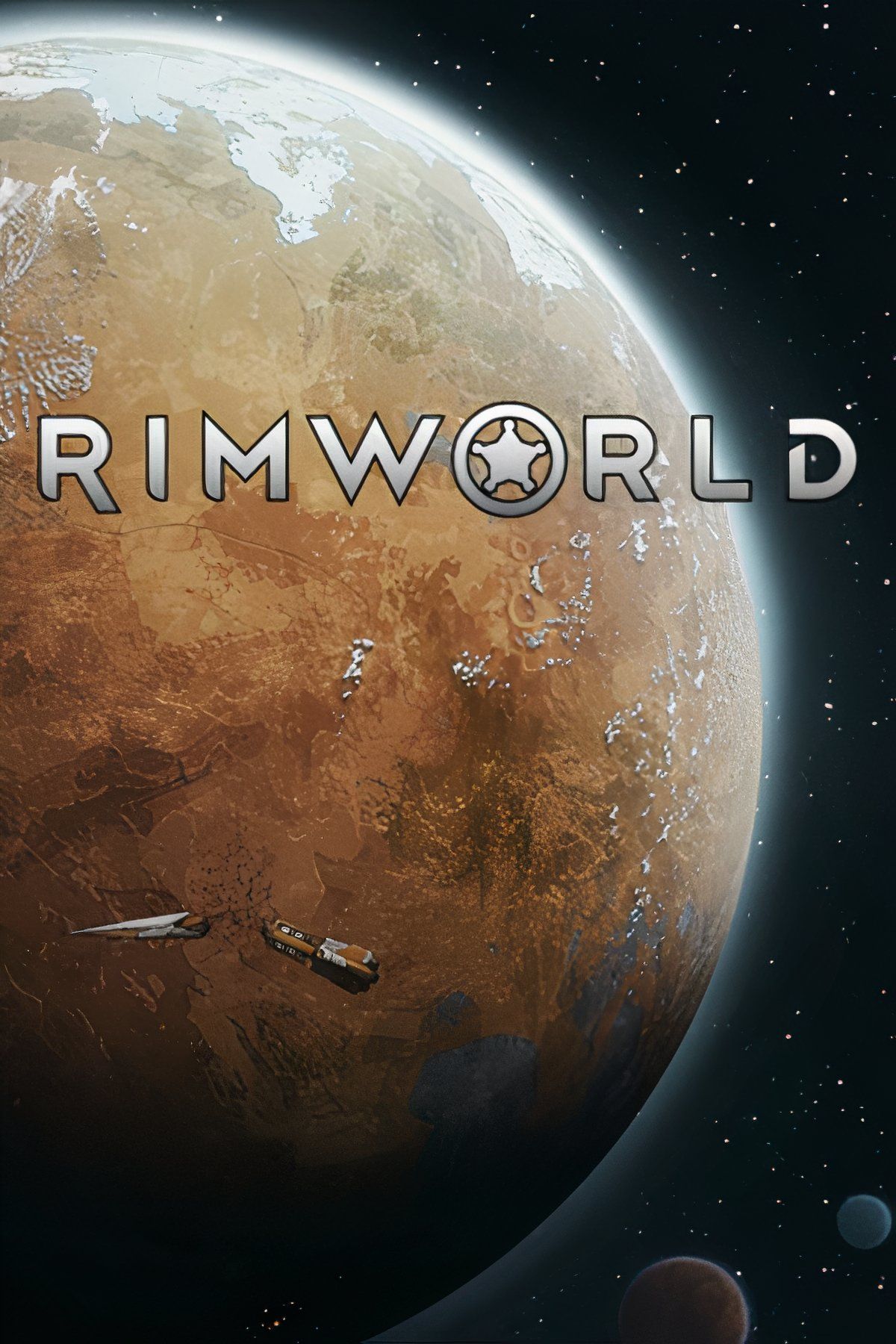
RimWorld
- Released
-
October 17, 2018
- ESRB
-
M For Mature 17+ due to Blood, Use of Drugs, Violence
- Developer(s)
-
Ludeon Studios
- Publisher(s)
-
Ludeon Studios
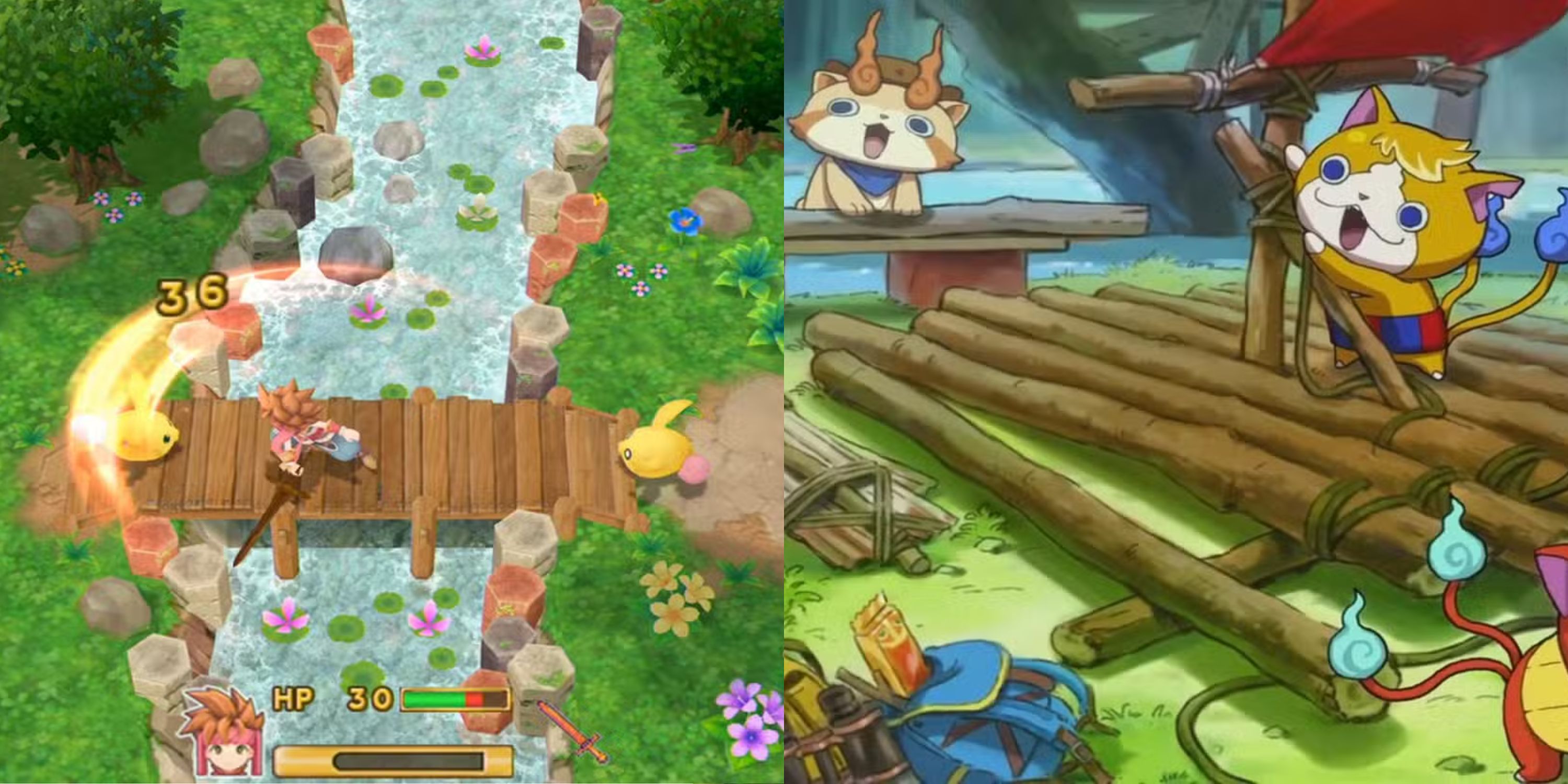
Next
8 Best JRPGs For Kids
These JRPGs are perfect for younger players, offering heartwarming stories, simple mechanics and magical adventures without overwhelming complexity.

